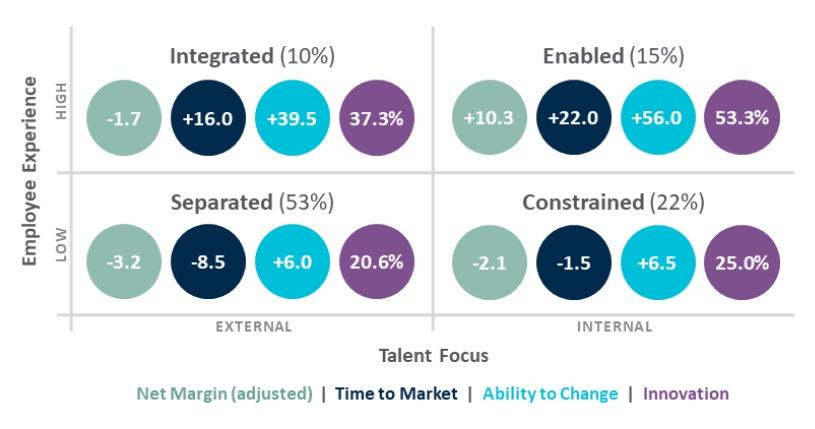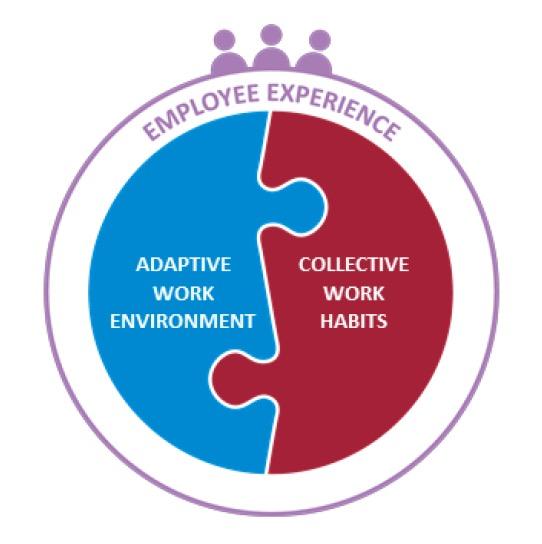Constrained
Companies taking the constrained approach typically capitalize on a less competitive market for digital talent. Talent has fewer options for employment based on the geographic location of the company, government regulations restrict employment options, and market conditions are less competitive, all allowing these companies to maintain a primarily FTE workforce. But these conditions do not incentivize a focus on great employee experience, and allow constrained companies to maintain an employee experience based on an outdated work environment and habits—those designed to be effective in a command and control organization and not supportive of new ways of working. While they realize slightly better business outcomes than companies that follow a separated approach, constrained companies limit their digital talent in delivering business value, and the impact is evident across all dimensions.
Integrated
Companies succeeding with the integrated approach typically describe themselves as having a workforce where it is hard to tell which talent is FTE and which externally sourced. While they maintain a core of FTE (in our study typically employing 21% of digital talent as FTE), these companies also develop partnerships with vendors, foster relationships with talent networks, and invest in talent recruitment platforms to enhance their workforce. Integrated companies are constantly iterating to design workplaces that deliver value for their entire workforce—regardless of workers’ relationship to the organization. Digital capabilities that truly span organizational boundaries, however, remain a challenge for many such companies. While integrated companies in our research were doing markedly better than those following the separated approach—especially in terms of time to market and the company’s ability to change—it should be noted that an integrated approach can still be quite costly, with negative average net margins when compared to direct competitors.
Enabled
Companies following an enabled approach generate the best business outcomes—on all four of our performance measures. These companies have built an employee experience that enables them to compete effectively with digitally born companies, and choose to employ the majority of their digital talent as FTE. Enabled companies are committed to investing in their digital talent, and clearly articulate the need for their people to be FTE. By building a great experience for their employees, these companies are also able to make very deliberate decisions about the use of external talent. Such decisions tend to be less about supplementing existing teams with the same capabilities and much more about adding new skills and perspectives to enhance creativity for specified projects.
FOCUSING ON EMPLOYEE EXPERIENCE TO BUILD VALUE FROM DIGITAL TALENT
Despite the opportunities enabled by digital platforms to increase the use of external talent, our research shows that a greater focus on sourcing digital talent as FTE yields significant improvements on all measures of performance. This is particularly evident when we examine attributes among the most critical in the digital world: ability to change (a measure of organizational agility) and innovation. If difficulty in competing for digital talent is forcing your company to engage increasingly with the external talent marketplace, we suggest that you invest in building a great employee experience. Ultimately, this will not only enable your workforce of today, but it will also help you to attract top talent as FTE and serve as the key to a long-term workforce strategy for digital.





